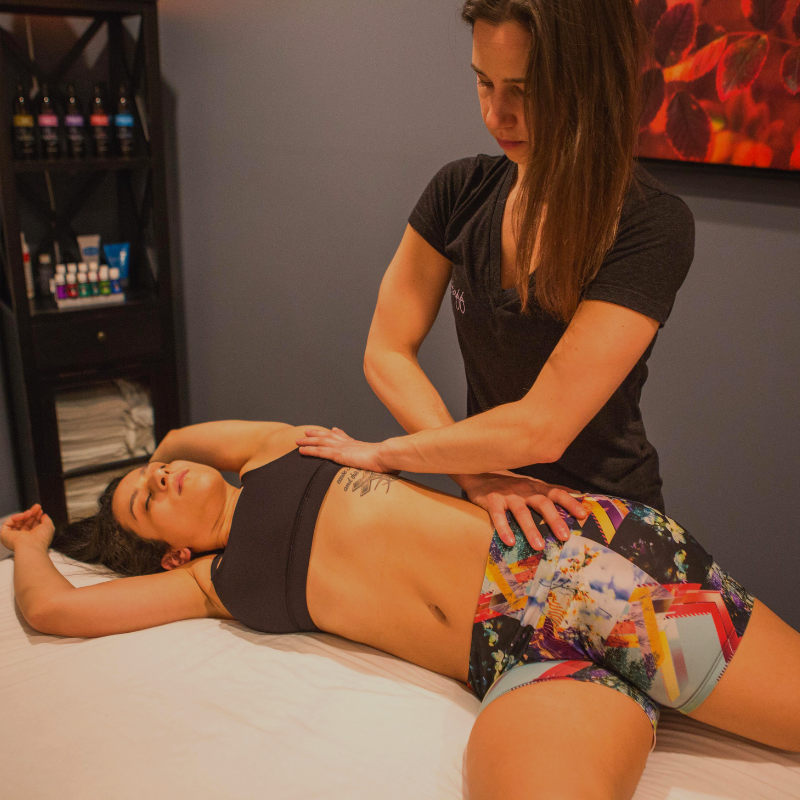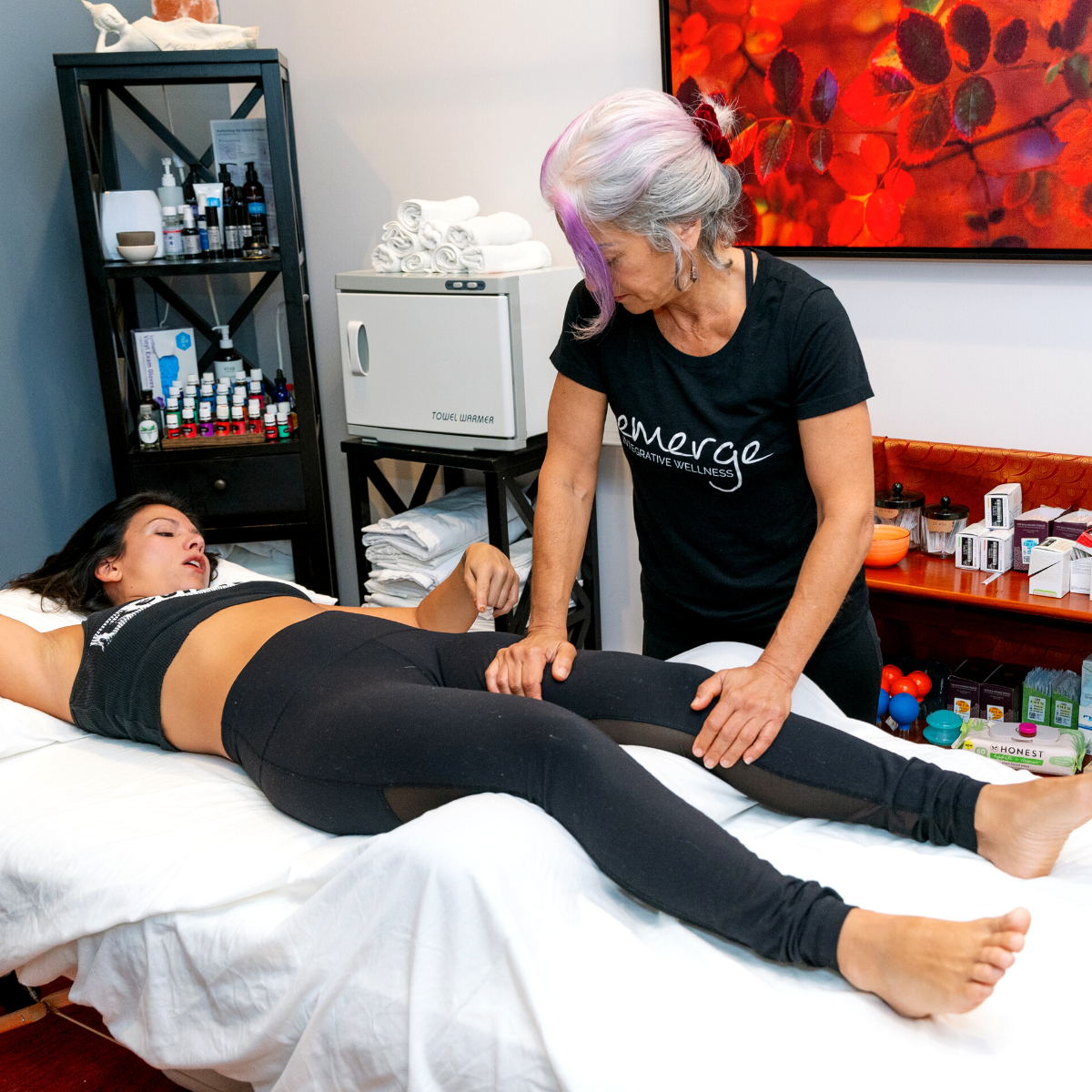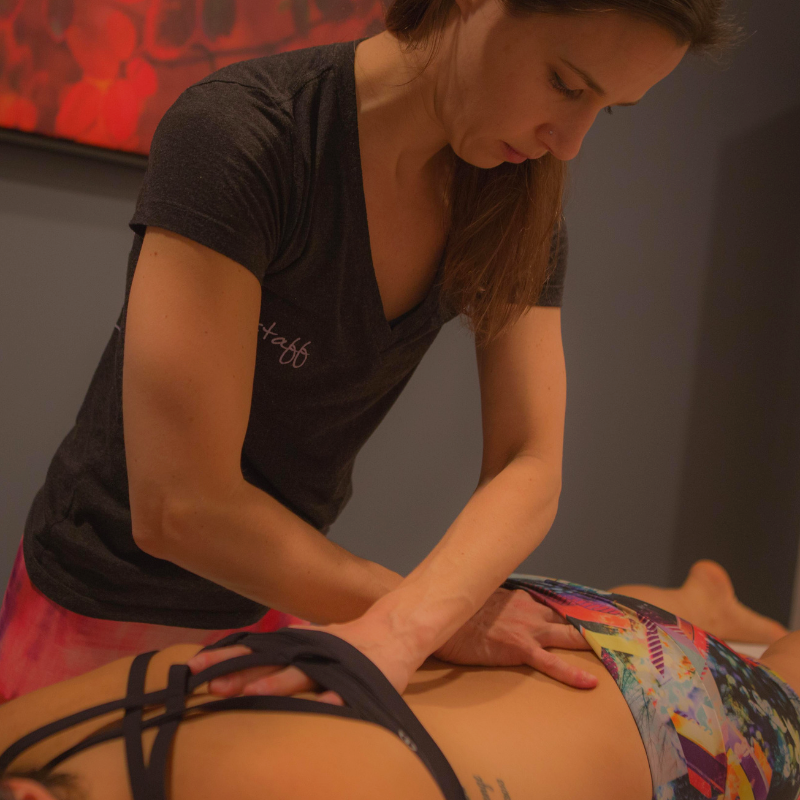Myofascial Release TECHNIQUE
Have you tried all types of traditional or alternative therapies and not found relief from pain, chronic disease, and/or emotional distress? Are you unable to enjoy your normal activities because of distracting or debilitating discomfort? Are you tired of relying on pharmaceuticals for temporary relief?
The Missing Piece is Myofascial Release Therapy
For many, the simple wear and tear of life may lead to chronic restrictions. Furthermore, accidents may result in conditions requiring specific therapeutic care.
Myofascial Release Therapy (MFR) targets the cause of discomfort by accessing the body’s connective tissues. Treatment will improve structural alignment, enhance flexibility, and increase range of motion. Sessions may include both deep stretching and sustained holds that will provide lasting results. By relieving pain & restoring mobility, you can regain a sense of complete vitality.
WE WILL HELP YOU RETURN TO A PAIN FREE & ACTIVE LIFESTYLE
Back Pain ✷ Headaches ✷ Whiplash ✷Pelvic Pain ✷ Neck Pain ✷ Sports Injuries ✷ Chronic Pain ✷ Disc Problems ✷ Migraines ✷ Neurological Dysfunction ✷ Fibromyalgia ✷ Chronic Fatigue Syndrome ✷ Carpal Tunnel ✷ Jaw Pain (TMJ) ✷ Painful Scars ✷ Scoliosis ✷ Sciatica ✷ Myofascial Pain Syndrome

An Effective Approach to Acute & Chronic Pain
Myofascial release is emerging as a technique with immense potential. Some significant studies have proven its benefits among various conditions. Please scroll for more information on some of the benefits of MFR treatment!
Alleviates Low Back Pain
Reduce Symptoms of Fibromyalgia
Increase Blood Flow
Postmenopausal women often experience insufficient blood flow in veins and this can cause immense pain and disability. Along with kinesiotherapy, myofascial release can reduce this pain and improve blood flow and overall quality of life.
Treat Chronic Pelvic Pain
Enhance Post Exercise Muscle Recovery
Treat Repetitive Strain Injuries
Myofascial Release FAQ
What is Myofascial Release (MFR)?
The John F. Barnes’ Myofascial Release Approach® (MFR) is gentle, respectful, and effective for a wide array of concerns, including but not limited to: musculoskeletal pain and dysfunction, injury rehabilitation, chronic pain syndromes, and stress management.
MFR is a safe hands-on therapy that administers sustained pressure into soft tissue (fascial) restrictions to affect a release. Along with compression, stretching, and facilitated movement, pressures may range from very light energetic holds to deep tissue manipulation. By eliminating pain, increasing range of motion, and re-balancing the entire body, MFR offers lasting relief.
How is MFR different than traditional massage?
Every experience will be a unique one, facilitated in a safe, non-judgmental and compassionate environment. The client is typically encouraged to wear loose fitting clothing that will allow for free movement, and no oils or lotions are used in order to obtain firm contact with the skin and the underlying fascial structures.
MFR is most respectful to the rhythm and pace of the body; a slower approach allows the body sufficient time to adjust to pressures, and thus become more receptive to receive a deeper release. Ultimately, MFR is never forceful or injurious, and focuses on the body as a whole unit, instead of isolated parts. Although individual symptoms will be addressed, this whole-body approach aims to discover the root cause of dysfunction.
Is MFR right for me?
This approach is ideal for:
- musculoskeletal pain, dysfunction, and misalignment
- injury rehabilitation
- mental and emotional disorders
- chronic pain syndromes
- stress management
Traditionally, direct myofascial release is sometimes referred to as deep tissue work or soft tissue mobilization. However, since not all situations require deep work, pressure is constantly adjusted to the client’s needs at the time of treatment. Often only the lightest pressure is necessary to provide a gentle stretch, thus creating a slow drag in the system, allowing for increased circulation and pain relief. MFR is truly a unique whole-body approach to treatment, often with profound results.
What should I wear to a session?
If you are receiving a Myofascial Release session, you will find that your body will want to move. And as you feel more and more comfortable allowing your body to move freely on the table (and off!), you will find that sheets get in the way. Because this is an active therapy, men are encouraged to bring a pair of loose fitting gym shorts; women can bring a pair of shorts and a loose shirt/tank top, comfortable bra, or a two piece bikini. This suggested attire will protect your modesty as a client, while allowing your whole body the freedom of full range of motion.
How often should I receive treatment?
This is unique to the individual. It depends on your condition, fitness level, proprioceptive awareness, comfort and trust level with your therapist, dedication to wellness goals, ability to devote necessary time to a self-care regimen, etc. The variables are endless, which is why it’s so hard to provide a timeline.
Generally, you can never receive too much MFR, as each treatment is different from the last, and more treatment will only have a cumulative effect toward your optimum health.
If you have a specific health concern that is not in an acute stage, once a week or once every two weeks is advised. If you are fairly healthy, have minor concerns, or wish to maintain goals you have already achieved, once a month is often sufficient for most clients.
However, for more acute or complex issues, clients are advised to increase frequency of visits, possibly to multiple times a day or week, as needed. (For more severe scenarios, please inquire about Intensive Treatment Packages and Multi-Therapist Sessions.)
I still feel discomfort after my session, what happened?
Occasionally, following a bodywork session, your body may go through what’s referred to as a “healing crisis,” in which your symptoms persist or even get temporarily worse. Typically this adjustment period lasts 24-72 hours, but may extend several days to a week. You may even find you get “stirred up” emotionally, or have unusual sensations arise.
Due to the gentle nature of MFR and its ability to target key areas of dysfunction, increased discomfort or new areas of pain tend to represent a positive outcome of the treatment. In fact, it indicates that the therapist targeted the correct areas, and in these cases, more frequent sessions are advised to continue the momentum of the healing process that was ignited.
As always, it is strongly advised that you communicate any concerns you may have to your therapist at all times. Especially if you are new to receiving Myofascial Release, you may encounter periods of wonder or confusion as your body adjusts to the treatment. It is totally normal, and you might find it a bit exciting to see the changes that can and do occur!



